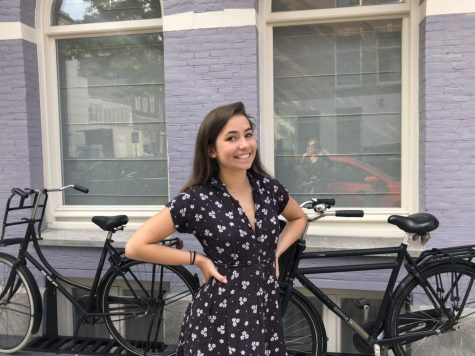The Advocates Behind Our Return to School
April 1, 2021
The future of returning to in person learning since before the pandemic for Charlottesville City schools hit a turning point nearly a month ago on March 4th at a school board meeting. In a 4-3 vote, school board members allowed Buford Middle School and Charlottesville High School to begin to plan for hybrid models of learning that will bring students back into the school after spring break. But the majority of the board would not have been convinced if it weren’t for the efforts of students and parents alike who advocated for the mental, academic, and social well-being of all the students affected by the pandemic.
The school board had been showing lots of restraint towards bringing students back to the building in the past months. After the board vetoed a proposed return plan before the beginning of the school year, opting for a completely online schedule, and then once again voting in November against returning students to school in February in November, students and parents alike were getting impatient. As county schools entered their own hybrid schedule in March, members of the community began expressing frustration for the CCS’ board hesitance to return students back into the classroom and for the lack of transparency.
At the March 4th school board meeting, the board allowed an hour of open discussion with community members where anyone was invited to speak. Parents and students alike gave statements about the necessity of returning to school for students, urging the board to vote in favor of the proposed hybrid learning method where students could opt in to returning to the classroom two days a week.
Charlottesville High School students including Lolly Lynch and Lidia Shimer spoke, attesting to their loss of motivation and the mental health decline that they and their peers have struggled with. Lidia, a junior at Charlottesville High School, directly addressed the administration, offering a plea that included a recitation of the governor’s letter that asked to prioritize in-person education. Lidia described in an interview with KTR that she had been receiving updates about the school board meetings from her mom who was often in attendance, and that they worked together for her to write a compelling speech with which to address the board.
“The experience was a bit nerve wracking because I was trying to convince a bunch of adults to listen to the points made by a teenager, but as I got into talking I felt confident that my words would reach them,” she said about talking in front of the school board. “I was proud to be a part of the decision making because I felt all the support from the students who didn’t have the chance, the resources, or maybe even just the courage to talk in front of a panel of adults.”
After talking in front of the school board, Lidia worked with Carloyn Slingluff, also a junior, to create a survey for students about how they felt about returning to school. They did this with the aim to have evidence to present to the school board if the vote continued to be debated about students’ opinions and feelings. Lidia attested that the responses came from a diverse selection of students and felt representative of the student body, and while they varied “overall everyone agreed that the students should be in the conversation, and that everyone should have a choice whether to return or not.”
Parents played an especially important role in the decision to bring students back into the building. James Burnett, the father of a freshman at C.H.S. and the communications director of the parent volunteer group that is helping with the return to in-person learning, described the process by which parents began to engage with each other over the necessity to return to school. “It was a matter of individual parents and families seeing that in-person learning met the entire needs of students in a way that virtual learning just isn’t set up to do,” Mr. Burnett said. “It was a bunch of people working in the same direction and it turned out that some of us know each other.”
Parents had begun to notice important data about both learning loss from virtual learning as well as the effectiveness of safety measures that city schools could implement to bring students back into the classroom. This research, combined with personal experiences of students suffering in the virtual environment, compelled parents to speak up at the school board meeting. “It’s clear that the teachers, Dr. I, the whole administration, has worked really hard to make virtual learning as good as it can be. But virtual learning is never going to be as good as in person when it comes to the entire needs of students,” Mr. Burnett stated. “On a structural level, no matter how hard the teachers work to pull it off, it’s just going to have its limitations.”
A number of parents spoke at the meeting, some offering personal stories about how their children and families have struggled, and others urging the school board simply to provide more transparency around what the conversations about returning to school are really like. “For many of us it took a little encouragement to speak up publicly and in a public forum, but it wasn’t organized,” Mr. Burnett said. He explained that while many parents were in contact with each other and knew that they were working towards the same goal, the parent volunteer group didn’t really come together as a group until after the meeting. “After the school board vote we realized it’s really important to make this final quarter of the year work as well as possible for every student. Now we’re just trying to be a resource,” he said. The group is working as a connection between the school and the community to find what the needs are and what can be provided, such as transportation or internet, to ensure a beneficial end of the year for students who are learning both virtually and in-person.
Students and teachers alike were also adamant about the fact that returning to school now, even for the last few months of the year, would provide an important “test run” for the fall, when schools will be required to be in-person 5 days a week. “Returning now gives us time to experiment and work out kinks before the next school year when hopefully, more people feel safe returning,” Lidia said.
Nicole Armstong, a C.H.S. vice principal, said that “the sentiments that were shared with the school board are similar to what we’ve heard,” the two main arguments to return being to help students mentally and help them academically. However, there is some apprehension among administration about how much returning to the building will improve mental health considering it won’t be a normal school environment, but Ms. Armstrong reminds that there are emotional and mental supports in place at the school such as counselors. “I can speak confidently to say that it won’t be perfect and we’re learning, but we have been working hard so that we will be prepared when students come back April 12th,” she says about the finalized decision to return to school.
Watch the school board meeting below:






